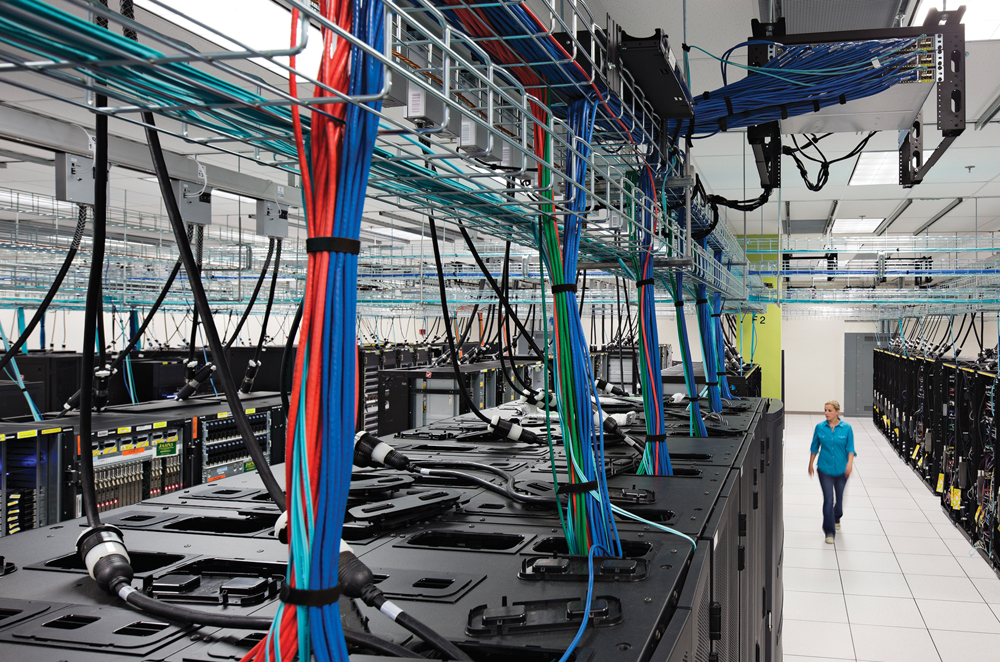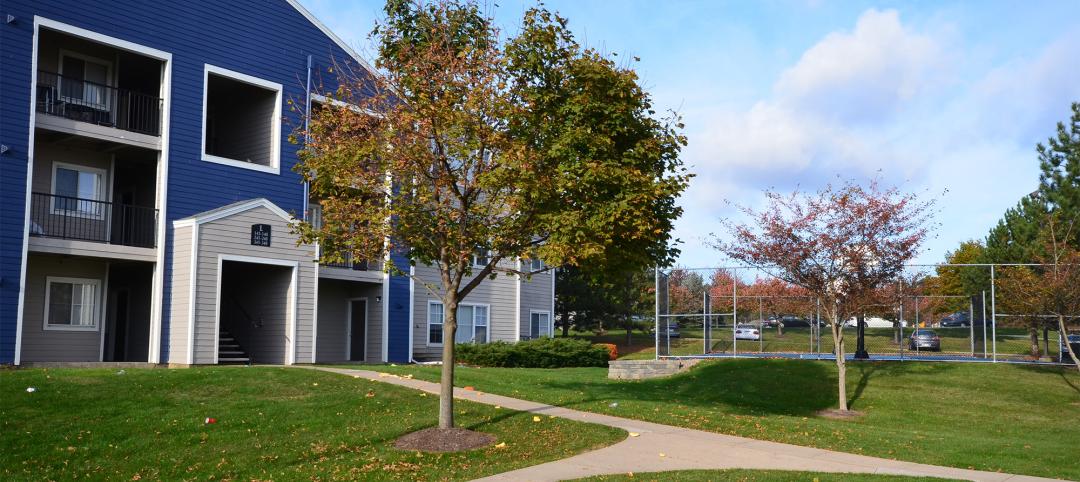While the once white-hot data center construction market has cooled off in recent years, the outlook for this sector remains quite rosy. Each year, businesses and institutions spend billions on data center construction and retrofit projects to keep up with the nation’s insatiable demand for data storage and processing.
The data center sector is conservatively estimated at $13-15 billion annually—larger than the hospitality, amusement/recreation, and water supply sectors, according to U.S. Census Bureau data. And the emergence of cloud computing and storage, combined with the “never delete anything” mindset of consumers and businesses, will only drive demand for data storage and processing.
“The data center market should generally follow the growth of Internet traffic, and Internet traffic continues to grow strongly,” says Craig Deering, AIA, LEED AP, National Practice Leader – Critical Facilities with HDR Architecture.
According to a May 2013 report from Cisco Systems, IP traffic volume in North America is expected to grow to 40 exabytes a month by 2017, a 23% cumulative annual growth rate. Cisco predicts global IP traffic will increase threefold over the next five years. Driving this steep growth are the explosion of networked devices, especially wireless gadgets, and the emergence of video as a dominant content type. Cisco predicts that traffic from wireless and mobile devices will exceed wired devices by 2016, and video will reach 69% of global consumer Internet traffic by 2017.
TOP DATA CENTER ARCHITECTURE FIRMS
2012 Data Center Revenue ($)1 Corgan $27,534,1912 Gensler $23,330,0003 HDR Architecture $16,295,0004 Integrated Design Group $14,598,9105 PageSoutherlandPage $14,450,0006 Reynolds, Smith and Hills $4,360,0007 Callison $3,973,6998 Little $3,655,5909 RTKL Associates $3,634,00010 EwingCole $3,000,000
TOP DATA CENTER ENGINEERING FIRMS
2012 Data Center Revenue ($)1 Fluor $235,678,9002 Syska Hennessy Group $36,735,4343 Jacobs Engineering Group $36,700,0004 H&A Architects & Engineers $35,427,5995 URS Corp. $26,229,0496 Environmental Systems Design $10,575,8927 Parsons Brinckerhoff $10,300,0008 H.F. Lenz $7,357,0009 Science Applications International Corp. $6,760,59810 AKF Group $6,602,000
TOP DATA CENTER CONSTRUCTION FIRMS
2012 Data Center Revenue ($)1 DPR Construction $895,882,4592 Balfour Beatty $753,194,2143 Holder Construction $710,000,0004 Turner Corporation, The $501,750,0005 Whiting-Turner Contracting Co., The $490,093,0456 Mortenson Construction $307,360,0007 Structure Tone $285,725,0008 Skanska USA $236,396,8589 Gilbane $130,362,00010 Carlson Design Construct $128,000,000
Giants 300 coverage of Data Centers brought to you by System Sensor www.systemsensor.com
What does this mean in terms of construction spending growth? If the Data Center Dynamics annual census of the industry is any indication, the data center construction market will remain one of the fastest-growing sectors in the country. According to DCD Intelligence’s most recent survey of nearly 3,800 data center owner/operators and 1,600 vendors, data center facility investment was up 23% on the Coasts and 50% in the central U.S. in 2011-12.
“Calculating the size of the data center market is challenging,” says Deering, “but no matter how you look at it, there’s no doubt that the data center market stands on its own as a distinct and meaningful sector.”
Achieving a lower cost of computing
Shrinking IT budgets and rising operational costs have led data center operators and corporate clients to scrutinize project budgets. As a result, AEC firms are being tasked with finding solutions for lowering the overall cost of computing and operating and maintaining the facilities.
This, in turn, is driving innovation in data center design, including the use of advanced cooling schemes, energy-efficient IT equipment, and higher-density environments. Advanced technologies like KyotoCooling, which utilizes heat wheels to reduce the cooling load on the building’s HVAC system, are becoming more common in U.S. data center projects. In addition, a growing number of data center operators are choosing to build new facilities in northern climates to take advantage of the cooler outdoor air temperatures.
Advancements in server technology, combined with a recent change to ASHRAE’s TC 9.9 Datacom guidelines, means that Building Teams can deliver facilities that operate at higher internal temperatures, greatly reducing cooling costs.
“The top end of the allowable range now is 80.6°F, up from 76°F previously,” says Ronald Vokoun, DBIA, LEED AP BD+C, Mission Critical Market Leader – Western Region with JE Dunn Construction. “Generally speaking, for every 1.8°F that you raise the temperature in your data center, you save 2-4% of your total energy bill. That’s a pretty high and immediate ROI.”
Rising costs are forcing many companies to outsource their data hosting through co-location and cloud services. This trend is leading to the construction of more mega-data center facilities, like CyrusOne’s new Chandler, Ariz., complex, which will eventually house more than
1 million sf of data center space. By 2015, just 2% of the world’s data centers will contain 60% of the floor space, up from 52% in 2010, according to a report from Gartner Inc.
“We will continue to see the concentration of data center floor space into a small community of dominant global players,” says HDR’s Deering.
Retrofits: A growth market
An emerging market for AEC firms is data center retrofits. The first wave of data centers—built during the dot-com boom of the late 1990s—are woefully outdated and are prime for retrofitting. Even the facilities built years later are behind the technology curve, and operators will be looking to upgrade their servers and infrastructure to meet the computing demands of today’s market.
“Many companies are looking at the ‘capex’ versus ‘opex’ dollars and realizing that they can strike a meaningful balance between the two by simply updating, retrofitting, or renovating their existing facilities,” says Jerry Sumrell, PE, Vice President, Mission Critical with RS&H. “This presents new challenges to the design industry, as we will be devoting more time to working in live data center environments with all of the associated risks that come with it. It’s akin to performing open-heart surgery—you have to keep the facility running 24/7 while adding new equipment, decommissioning existing equipment, and transferring power/cooling from one piece of equipment to another.”
Read BD+C's full Giants 300 Report
Related Stories
Sustainability | Nov 1, 2023
Tool identifies financial incentives for decarbonizing heavy industry, transportation projects
Rocky Mountain Institute (RMI) has released a tool to identify financial incentives to help developers, industrial companies, and investors find financial incentives for heavy industry and transport projects.
Contractors | Nov 1, 2023
Nonresidential construction spending increases for the 16th straight month, in September 2023
National nonresidential construction spending increased 0.3% in September, according to an Associated Builders and Contractors analysis of data published today by the U.S. Census Bureau. On a seasonally adjusted annualized basis, nonresidential spending totaled $1.1 trillion.
Sponsored | MFPRO+ Course | Oct 30, 2023
For the Multifamily Sector, Product Innovations Boost Design and Construction Success
This course covers emerging trends in exterior design and products/systems selection in the low- and mid-rise market-rate and luxury multifamily rental market. Topics include facade design, cladding material trends, fenestration trends/innovations, indoor/outdoor connection, and rooftop spaces.
Giants 400 | Oct 30, 2023
Top 170 K-12 School Architecture Firms for 2023
PBK Architects, Huckabee, DLR Group, VLK Architects, and Stantec top BD+C's ranking of the nation's largest K-12 school building architecture and architecture/engineering (AE) firms for 2023, as reported in Building Design+Construction's 2023 Giants 400 Report.
Giants 400 | Oct 30, 2023
Top 100 K-12 School Construction Firms for 2023
CORE Construction, Gilbane, Balfour Beatty, Skanska USA, and Adolfson & Peterson top BD+C's ranking of the nation's largest K-12 school building contractors and construction management (CM) firms for 2023, as reported in Building Design+Construction's 2023 Giants 400 Report.
Giants 400 | Oct 30, 2023
Top 80 K-12 School Engineering Firms for 2023
AECOM, CMTA, Jacobs, WSP, and IMEG head BD+C's ranking of the nation's largest K-12 school building engineering and engineering/architecture (EA) firms for 2023, as reported in Building Design+Construction's 2023 Giants 400 Report.
MFPRO+ Special Reports | Oct 27, 2023
Download the 2023 Multifamily Annual Report
Welcome to Building Design+Construction and Multifamily Pro+’s first Multifamily Annual Report. This 76-page special report is our first-ever “state of the state” update on the $110 billion multifamily housing construction sector.
Smart Buildings | Oct 27, 2023
Cox Communities partnership levels up smart tech for multifamily customers
Yesterday, Cox Communities announced its partnership with Level Home Inc., a provider of next-generation smart IoT solutions for multifamily customers.
Student Housing | Oct 25, 2023
Pierce Education Properties acquires Penn State student housing
The two communities offer a wide range of amenities, including swimming pools with sun decks, study rooms with complimentary printing services, fitness centers, tennis court, and sand volleyball courts.
Senior Living Design | Oct 19, 2023
Senior living construction poised for steady recovery
Senior housing demand, as measured by the change in occupied units, continued to outpace new supply in the third quarter, according to NIC MAP Vision. It was the ninth consecutive quarter of growth with a net absorption gain. On the supply side, construction starts continued to be limited compared with pre-pandemic levels.

















